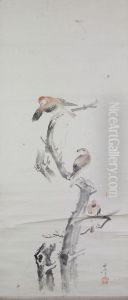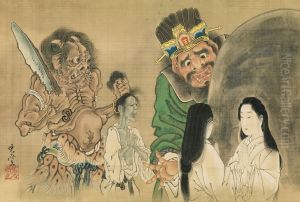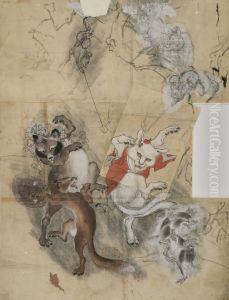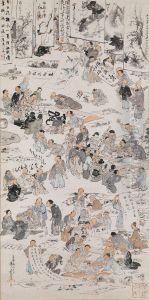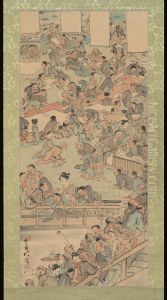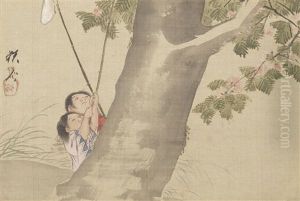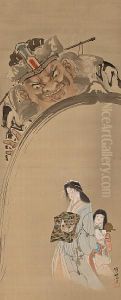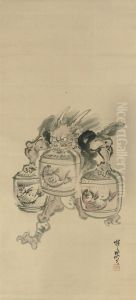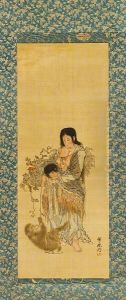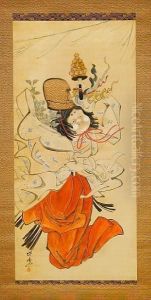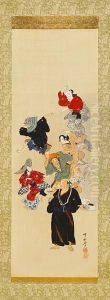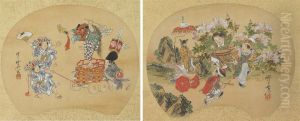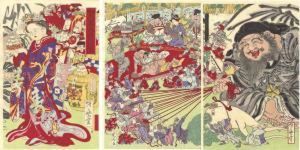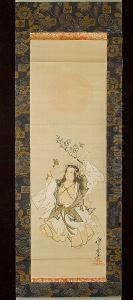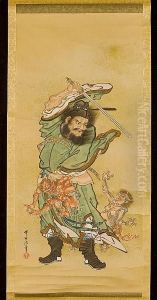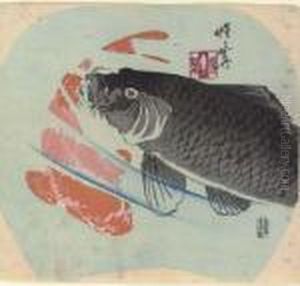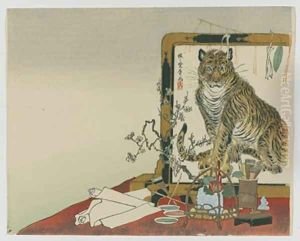Kawanabe Kyosai Paintings
Kawanabe Kyosai was a Japanese artist who is best known for his paintings and woodblock prints. Born in Koga, he was originally named Shusai Chikanobu. From a young age, Kyosai demonstrated a prodigious talent for drawing and painting, which led him to study under several masters of Japanese art. His most significant mentor was Kano Eitoku of the Kano school, one of the most prestigious art schools in Japan, where he was rigorously trained in the traditional Japanese style of painting.
Kyosai's career spanned a period of great change in Japan, from the late Edo period through the Meiji Restoration. His work, therefore, reflects a unique blend of the traditional and the modern, often infused with a sense of humor and satire that was rare for artists of his time. Kyosai is particularly noted for his paintings of ghosts, demons, and other supernatural subjects, which are imbued with vibrant color and dynamic composition. His depictions of such themes are considered to be among the finest in the genre of Japanese supernatural art.
In addition to his paintings, Kyosai was a prolific printmaker, and he embraced the ukiyo-e style of woodblock printing. His prints, which often featured subjects from folklore and mythology as well as contemporary societal commentary, were popular among the Japanese public. Kyosai's work in this medium contributed significantly to the development of the Meiji era's visual culture.
Despite his success, Kyosai's life was not without controversy. His penchant for satire often brought him into conflict with the authorities, leading to multiple arrests throughout his career. Nevertheless, he remained a highly respected artist among his peers and patrons for his technical expertise and creative genius.
Kyosai also had a significant impact on the development of Western perceptions of Japanese art. His works were among those displayed in international exhibitions, where they influenced European artists and contributed to the Japonisme movement. Today, Kawanabe Kyosai is remembered as one of the most important figures in the transition of Japanese art from the traditional styles of the Edo period to the more eclectic and international approach of the Meiji era.
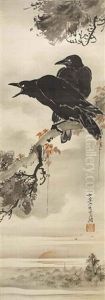
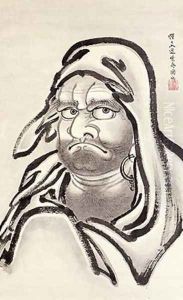
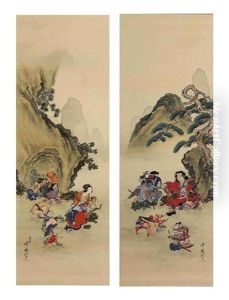


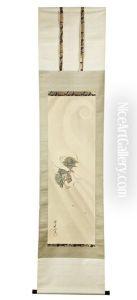
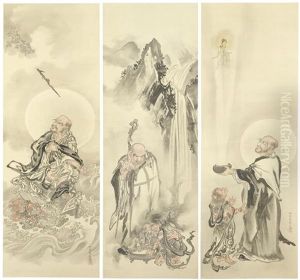
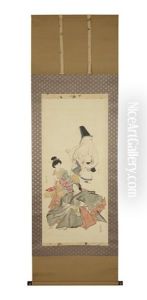
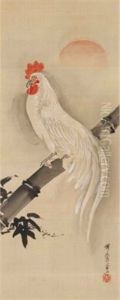
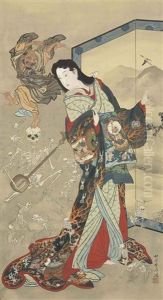
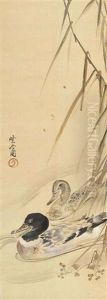

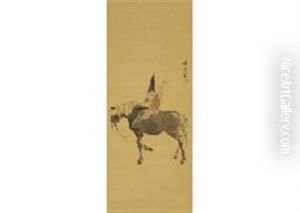
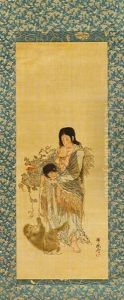
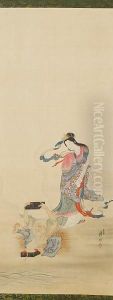
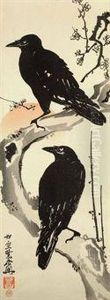
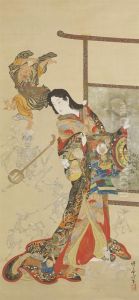
![Landscape with River in Mountainous Country [left of a triptych]](https://www.niceartgallery.com/imgs/4562485/s/kawanabe-kyosai-landscape-with-river-in-mountainous-country-left-of-a-triptych-7b1e1790.jpg)

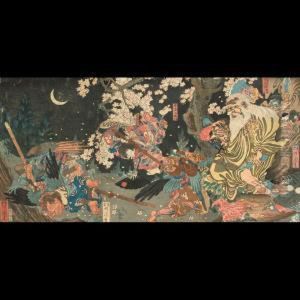
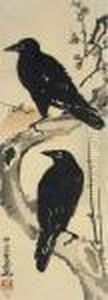
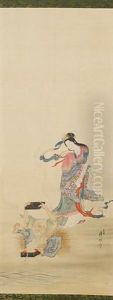
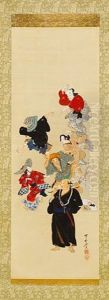
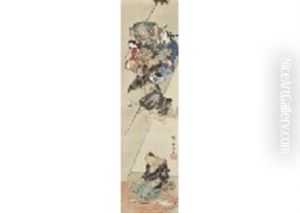
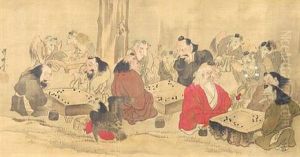
![Long Legs [left of a pair of Long Legs and Long Arms]](https://www.niceartgallery.com/imgs/4562447/s/kawanabe-kyosai-long-legs-left-of-a-pair-of-long-legs-and-long-arms-dc9c2c8a.jpg)
